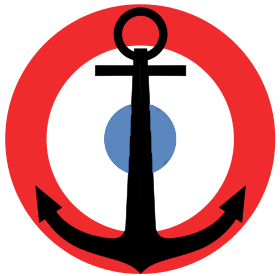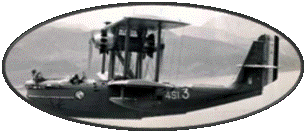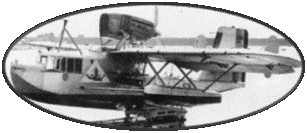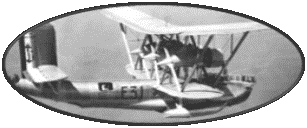In February 1938, the Air
Ministry asked the Supermarine company to study a hull seaplane
for the surveillance of coasts and fishing areas. Supermarine designed
a aircraft, the Sea-Otter, whose design was close to the Walrus.
The Sea Otter was a metal
biplane hull seaplane. It was initially powered by a star-shaped
Bristol Perseus XI, installed in the center of the upper plane.
This, not very powerful, was quickly replaced by a Bristol Mercury
920 XX and finally a Bristol Mercury XXX in star of 855 hp. The
Sea-Otter was fitted with a retractable tricycle train. He could
thus serve from land bases.
The studies were carried
out quickly, probably too quickly, and the prototype, registered
K8854, made its first flight on September 23, 1938. The aircraft
proved to be very unstable on take-off and considered dangerous
at ditching ... The seaplane is returned to the factory to complete
its development.
But the entry into the war
of England will logically lead Supermarine to favor its Spitfire
Fighter, to the detriment of less strategic projects including the
Sea-Otter. And it was not until July 1943 that the Sea-Otter was
finally declared operational. The problems of youth of the aircraft
corrected, this one could be used for missions of rescue at sea.
These seaplanes were used
on different theaters of operations: they participated in the Allied
landing in Normandy, in June 1944. Some examples will be deployed
in Burma, between October 1944 and April 1945, where they will carry
out surveillance and even bombardment missions with 45kg bombs launched
from the cabin.
The British Navy received
its first copies in November 1944. 6 of them will be carried on
the aircraft carrier HMS KHEDIVE. Most of the missions will be carried
out in the Pacific or the Indian Ocean
After the War, the Sea-Otter
was used by the RAF until 1954 and until 1952 by the British fleet.
The Sea-Otter will also be
used by other Allied Marines: 8 aircraft will thus be sold to the
Danish Air Force, 8 to the Dutch Air Force. 14 specimens will be
used, post-War, by the Australian Navy and will be withdrawn from
the service in 1954.
In 1947, the French Navy
also received Sea-Otter which will be assigned to the 8S Squadron
based in Indochina and scrapped in 1950. 6 other Sea-Otter will
be assigned, in 1950, to the 9S Squadron and employed in the fight
against arms trafficking.
Note that some copies will
be transformed into civil aircraft: they will receive 4 passage
seats, a chemical toilet and a luggage space.
In total, 292 copies of Supermarine
Sea-Otter will be produced









